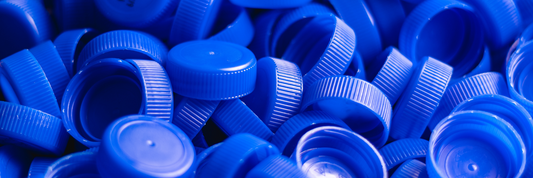Beer is one of the world’s most beloved beverages, enjoyed by people across cultures and occasions. However, one common question arises: "How long does beer last?" Understanding the longevity of beer is important for maintaining its quality, safety, and flavor. This guide will explore everything you need to know about the shelf life of beer, how to store it properly, and how to tell if it has gone bad.
Understanding Beer Shelf Life
The shelf life of beer refers to the period during which it retains its optimal taste and quality. While beer doesn’t spoil like perishable foods, it can lose its original flavor and carbonation over time. Factors such as ingredients, alcohol content, and packaging significantly affect how long beer lasts.

Does Beer Expire or Go Bad?
Beer doesn’t expire in the sense that it becomes unsafe to drink. Instead, it gradually deteriorates, losing the qualities that make it enjoyable. While a stale beer might not be pleasant, it’s unlikely to cause harm if consumed.
Factors Affecting Beer Longevity
Storage Conditions
Proper storage plays a crucial role in preserving beer. Temperature, light exposure, and humidity can all impact its quality. Ideally, beer should be stored in a cool, dark place. Refrigeration is often the best option, especially for beers meant to be consumed fresh.
Beer Packaging Types
The type of beer packaging—bottle, can, or keg—also affects how long beer stays fresh. Cans provide better protection against light and oxygen compared to bottles, making them an excellent choice for preserving beer quality.
Beer Styles and Alcohol Content
Different beer styles have varying shelf lives. Lighter beers like pale ales and IPAs are best consumed within a few months, while darker beers like stouts and porters can last longer. Beers with higher alcohol content, such as barleywines or Belgian quads, are often suitable for aging, with flavors evolving over time.
How Long Does Beer Last

Light Beers (e.g., Pale Ales, IPAs)
Dark Beers (e.g., Stouts, Porters)
High-ABV Beers (e.g., Barleywines, Belgian Quads)
- Shelf Life: Can last from 1 to 10 years or more, depending on the beer and storage conditions.
- Reason: High alcohol content acts as a preservative, and these beers are often designed for aging. Over time, their bold flavors can evolve, producing deeper and richer notes, such as caramel, dark fruit, and toffee.
- Recommendation: Store these beers in a temperature-controlled environment (ideally around 50–55°F or 10–13°C) to allow flavors to mature gracefully.
Wheat Beers (e.g., Hefeweizens, Witbiers)
- Shelf Life: Best enjoyed within 2 to 3 months of packaging.
- Reason: Wheat beers are known for their fresh, crisp, and delicate flavors, which degrade quickly. They are not ideal for aging and can develop off-flavors if kept for too long.
- Recommendation: Consume wheat beers fresh to fully enjoy their fruity, citrusy, and refreshing qualities.
Sour Beers and Lambics
- Shelf Life: Varies widely, from 6 months to several years, depending on the style.
- Reason: Some sour beers, particularly those with wild yeasts or barrel aging (e.g., lambics, gueuzes), are designed to evolve over time. Others, like kettle sours, are meant to be consumed fresh.
- Recommendation: Check the brewer's guidance on aging. For complex, traditionally brewed sours, extended storage can lead to enhanced depth and balance.
Craft Beers
- Shelf Life: Typically best within 3 to 6 months, though this depends on the beer's style.
- Reason: Craft beers often prioritize fresh, bold flavors, particularly in hoppy styles like IPAs. Since many craft breweries avoid preservatives, their beers may not have as long a shelf life as mass-produced ones.
- Recommendation: Always check for a "best by" or "bottled on" date, and drink craft beers fresh whenever possible.
Summary Table: Beer Shelf Life by Type
| Beer Type | Typical Shelf Life | Best Practices |
| Light Beers | 3–6 months | Store cool, drink fresh. |
| Dark Beers | 6–12 months (or longer) | Can develop richer flavors over time. |
| High-ABV Beers | 1–10 years | Suitable for aging; store properly. |
| Wheat Beers | 2–3 months | Consume quickly for the freshest taste. |
| Sour Beers & Lambics | 6 months–several years | Varies; traditional styles improve with aging. |
| Craft Beers | 3–6 months | Best enjoyed fresh. |
| Mass-Produced Beers | 6–12 months | Consume within the first few months for freshness. |
| Non-Alcoholic Beers | 6–12 months | Refrigerate and check dates. |
How to know when beer has gone bad
Visual Indicators
Check for unusual changes such as cloudiness, sediment, or discoloration, which may indicate the beer has degraded.

The Taste of Expired Beer
Off-putting smells like cardboard or "skunky" aromas are signs of staleness. Similarly, a metallic or sour taste suggests the beer is no longer fresh.
Carbonation Levels
Flat beer is another indicator of age or improper storage. Fresh beer should have a lively carbonation.
Why Does Beer Go Bad?
Beer doesn't "go bad" in the sense that it becomes unsafe to drink (like milk or meat), but it can lose its desirable qualities over time. The reasons why beer degrades come down to chemical reactions, storage conditions, and external factors. Here’s a detailed look at the factors that contribute to beer losing its freshness and flavor.
1. Oxidation
Oxidation is one of the most common reasons beer loses its quality. When oxygen interacts with the compounds in beer, it triggers chemical reactions that alter its taste and aroma.
What Happens?- Flavors fade: Fresh flavors, especially hops, become muted.
-
Off-flavors develop: Oxidized beer can taste stale, like cardboard or wet paper.
How to Prevent Oxidation?
- Proper sealing during brewing and packaging minimizes oxygen exposure.
- Store beer in cans, which are more airtight than bottles.

2. Light Exposure (Skunking)
Light exposure, especially UV light, causes a chemical reaction in beer that produces unpleasant sulfur-like compounds, giving it a "skunky" smell and taste.
Why Does This Happen?
- Hops in beer contain light-sensitive compounds that break down under UV rays.
- This is particularly a problem for beer in clear or green bottles, as they provide little protection from light.
How to Prevent Light Damage?
- Store beer in a dark place or in packaging that blocks light, such as cans or amber bottles.

3. Temperature Fluctuations
Beer is sensitive to changes in temperature. While brief exposure to heat doesn’t "spoil" beer, prolonged or extreme temperature fluctuations can speed up its aging process.
What Happens?
- Heat accelerates oxidation and other chemical reactions.
- Hoppy beers (e.g., IPAs) lose their bright, fresh flavors more quickly.
How to Prevent Temperature Damage?
- Keep beer stored at a consistent, cool temperature (ideally 38–50°F or 3–10°C).
- Avoid leaving beer in hot environments, like cars or near windows.
4. Microbial Contamination
While rare, improper brewing or packaging can introduce unwanted microorganisms into beer. These microbes can change the beer's flavor, aroma, and carbonation.
What Happens?
- Contaminants can create sour or off-flavors.
- Over-carbonation or foaming may occur if yeast or bacteria continue fermenting sugars.
How to Prevent Contamination?
- Modern brewing techniques and pasteurization significantly reduce this risk.
- Properly sealed packaging ensures beer remains free from contamination.
5. Breakdown of Hop Compounds
Hop-forward beers, like IPAs, are particularly prone to losing their fresh, citrusy, or floral notes over time. The compounds that give these beers their distinctive aroma and flavor degrade relatively quickly.
What Happens?
- Hop oils oxidize, leading to diminished bitterness and aroma.
- Over time, the beer’s flavor profile becomes unbalanced, with malt flavors dominating.
How to Preserve Hop Freshness?
- Consume hop-forward beers within 2–3 months of packaging for the best experience.
- Store these beers cold to slow the degradation of hop compounds.
6. Aging of Malt Compounds
Malt-forward beers like stouts and porters can develop rich flavors over time, but excessive aging or poor storage can lead to flavor loss or undesirable characteristics.
What Happens?
- Caramel and roasted flavors fade.
- Oxidation can lead to overly sweet or cloying notes.
How to Manage Malt Aging?
- High-alcohol beers, such as imperial stouts, are more suitable for aging under controlled conditions.
7. Carbonation Loss
Beer can lose its carbonation over time, especially if the packaging seal weakens or is damaged.
What Happens?
- Flat beer lacks the lively mouthfeel and crispness of fresh beer.
- This is more common in older beers or improperly stored bottles or cans.
How to Prevent Carbonation Loss?
- Store beer upright to minimize stress on the seal.
- Check for signs of damaged packaging, such as leaks or bulging cans.
8. Natural Aging
Even under ideal conditions, beer changes over time. While some beers improve with aging, most are designed to be consumed fresh.
What Happens?
- Fresh flavors fade, and the beer’s profile may become unbalanced.
- Alcohol-forward beers can develop deeper, more complex notes, but lighter beers lose their charm.
How to Maximize Freshness?
- Always check the "best by" or "bottled on" date.
- Drink beer while it’s within its peak freshness period, especially for lighter styles.
Understanding Beer Dates Expiration

"Best By" vs "Bottled On" Dates
Beer packaging often includes dates to guide consumers. "Best by" dates indicate the period during which the beer is freshest, while "bottled on" dates tell you when it was produced.
Interpreting Beer Date Codes
Some breweries use specific coding systems for dates. Familiarize yourself with these to understand how long your beer has been sitting.
The Effects of Aging Beer
Which Beers Are Suitable for Aging?
Not all beers age well. Beers with higher alcohol content and robust flavors, such as imperial stouts and lambics, are better suited for aging.
Expected Flavor Changes Over Time
Aging can enhance certain flavors, such as caramel or dried fruit notes, while diminishing others, like hop bitterness.
Risks of Aging Beer
Aged beer can sometimes develop unwanted flavors due to oxidation. Careful storage is key to minimizing these risks.
Frequently Asked Questions
Can Expired Beer Make You Sick?
Drinking expired beer is typically safe, though it may taste unpleasant. The risk of illness is minimal since beer contains alcohol, which inhibits harmful bacteria growth.
Is It Safe to Drink Beer Past Its Expiration Date?
Yes, but keep in mind that the quality and taste may have declined. Enjoying beer while it’s fresh is generally recommended.
How Can I Extend the Shelf Life of My Beer?
Store your beer in a cool, dark place, preferably in the refrigerator, to preserve its quality for as long as possible.
Conclusion
Understanding how long beer lasts and the factors that influence its shelf life is essential for enjoying it at its best. Whether you’re a casual drinker or a beer enthusiast, proper storage and awareness of beer's characteristics can ensure a great drinking experience. Remember, while beer may not spoil, it’s always better to savor it fresh.









